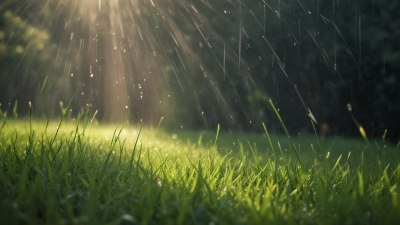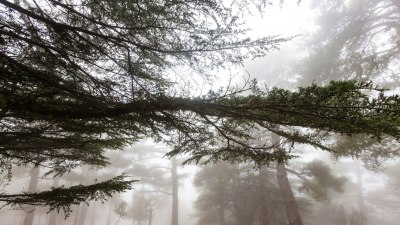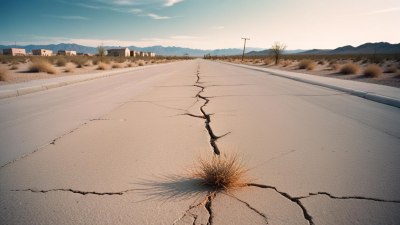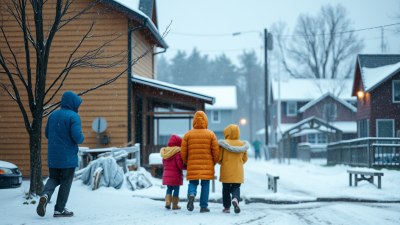Why Breezes Pick Up at Certain Times of Day and Then Stop
Explore the reasons why breezes increase and decrease at different times of day, affecting our environment and activities.

Image by prostooleh on Freepik
Have you ever noticed how the wind seems to have a mind of its own, picking up in intensity during certain times of day and then calming down as the day progresses? This phenomenon is not just a random occurrence; it is deeply rooted in the dynamics of atmospheric conditions and the local geography. In this article, we'll explore the reasons why breezes behave the way they do, from the science behind wind formation to the effects of temperature variations and human activity.
The Basics of Breeze Formation
Wind, or breezes, are essentially the result of the uneven heating of the Earth's surface by the sun. Different areas absorb heat at varying rates due to factors such as land cover, moisture content, and surface type. As the sun rises and sets, these differences in heating cause variations in air pressure, resulting in air movement. The greater the pressure difference between two areas, the stronger the wind. Typically, during the day, land areas heat up faster than bodies of water, leading to pressure differences that generate breezes.
Daytime Heating and Land-Sea Breeze Effects
During the daytime, especially on sunny days, land surfaces absorb heat from sunlight much more efficiently than water. This heating causes the air above the land to warm up, expand, and rise. As this warm air rises, it creates a lower pressure area at the surface. Cooler air from the water then moves in to replace the rising warm air, resulting in a land breeze. This breeze usually peeks in the afternoon when the temperature difference is greatest, and can often be felt at the beach or coastal areas. Conversely, at night when the land cools off faster than water, the breeze may reverse, creating a sea breeze that can persist into the early hours of the morning.
Topographical Influences on Breezes
Geography plays a crucial role in the behavior of breezes. In areas with mountains, valleys, or hills, local winds often form due to the differential heating of these landforms. Mountain breezes occur during the night as cooler air flows down the slopes into the valleys, while valley breezes form during the day as the sun warms the valley floor, causing the air to rise. Such local wind patterns can significantly influence the overall weather and climate of a region, making certain locations more prone to breezy conditions at specific times of the day.
Temperature Gradients and Atmospheric Pressure
The atmosphere is a complex system where various factors influence temperature and pressure gradients. During the day, solar heating leads to warmer temperatures at the surface, while at night, radiation cooling occurs. These daily temperature gradients contribute to the formation of wind patterns. Moreover, changes in atmospheric pressure over larger areas can lead to the development of high-pressure and low-pressure systems, which can alter wind patterns over time frames longer than a single day. Understanding these concepts can help explain the ebb and flow of breezes as they correlate with daylight.
Urbanization can have a considerable impact on local breezes. Cities, with their concrete surfaces and infrastructure, often heat up more than surrounding rural areas, creating what is known as the urban heat island effect. This localized heating can alter temperature and pressure gradients, leading to unique wind patterns that differ from those found in natural settings. Additionally, tall buildings can channel breezes upwards and disrupt their flow, creating areas of calm and turbulence.
Seasonal Variations and Climate Change
The time of year also plays a role in the patterns of breezes. Seasonal changes can cause variations in the sun’s path, affecting how land and water bodies heat up over time. For instance, summer days may see more intense and frequent breezes than in the cooler months when temperature differentials are less pronounced. Climate change is likely to further influence wind patterns; as global temperatures rise and weather systems behave unpredictably, we may witness shifts in how and when breezes develop. Understanding these trends is essential for better predicting and adapting to changing environmental conditions.
Linking Breezes to Daily Activities
Lastly, the timing of breezes can significantly impact human activities. For instance, many people prefer outdoor activities during the afternoon when breezes are at their peak for cooling off. In coastal areas, water sports tend to be more popular during these breezy times. Similarly, the agricultural industry monitors wind patterns as breezes can help with the dispersal of seeds and pollens, influencing farming schedules and practices. Knowing when to expect a breeze can lead to better planning for recreational, agricultural, and even construction activities.
Understanding why breezes pick up at certain times of the day and then subside involves a combination of meteorological principles and local geographical features. The interaction between temperature, pressure, and the Earth’s surface consistently shapes our experience with wind and breezes. Whether you’re a scientific enthusiast, a lover of the outdoors, or simply curious about the weather, recognizing these patterns can enhance your appreciation for the atmospheric phenomena that we often take for granted. Staying informed about local wind patterns may not only help in planning your day but also in understanding the broader implications of climatic changes in our environment.











